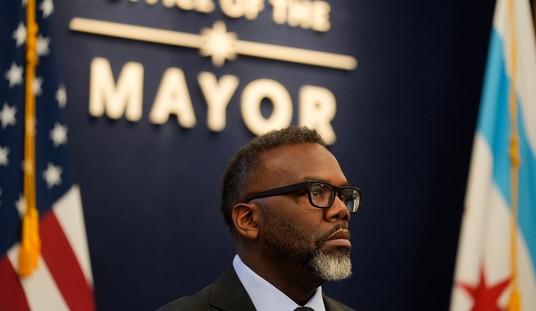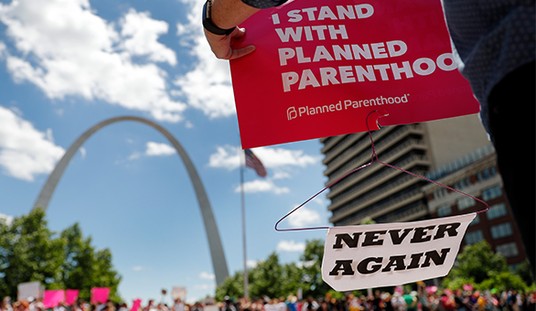The last several months have not been kind to our country’s long cherished religious freedom, but the Supreme Court just unanimously handed down a victory for those of us who still value it. In their ruling for the case of Reed v. the Town of Gilbert, Arizona, the court ruled, essentially, that the government cannot pick which forms of speech it wants to protect more than others, and furthermore, even if the law was not intended to discriminate against a particular kind of speech, that is still no reason to justify content-based regulation of speech. Here’s a brief summary of why this became an issue, via the Oyez Project of IIT Chicago’s Kent College of Law:
Clyde Reed, pastor of Good News Community Church (Good News), rented space at an elementary school in Gilbert, Arizona, and placed about 17 signs in the area announcing the time and location of Good News’ services. Gilbert has an ordinance (Sign Code) that restricts the size, number, duration, and location of certain types of signs, including temporary directional ones, to prevent improper signage. After Good News received an advisory notice from Gilbert that it violated the Sign Code, Good News sued Gilbert and claimed that the Sign Code violated the Free Speech Clause of the First Amendment and the Equal Protection Clause of the Fourteenth Amendment.
The district court sided with the town, and the 9th Circuit upheld the lower court’s ruling. The Supreme Court, of course, did not agree, which is hardly unusual when we’re talking about the 9th Circuit. Writing for all nine justices, Clarence Thomas stated (bolding mine):
A law that is content based on its face is subject to strict scrutiny regardless of the government’s benign motive, content-neutral justification, or lack of “animus toward the ideas contained” in the regulated speech. Cincinnati v. Discovery Network, Inc., 507 U. S. 410, 429 (1993). We have thus made clear that “‘[i]llicit legislative intent is not the sine qua non of a violation of the First Amendment,’” and a party opposing the government “need adduce ‘no evidence of an improper censorial motive.’” Simon & Schuster, supra, at 117. Although “a content-based purpose may be sufficient in certain circumstances to show that a regulation is content based, it is not necessary.” Turner Broadcasting System, Inc. v. FCC, 512 U. S. 622, 642 (1994). In other words, an innocuous justification cannot transform a facially content- based law into one that is content neutral.
The town of Gilbert’s arguments in support of their ordinance rested on the fact that it was necessary to protect the town’s aesthetic appeal and to ensure traffic safety. Justice Thomas does an excellent job dismantling these arguments:
Starting with the preservation of aesthetics, temporary directional signs are “no greater an eyesore,” Discovery Network, 507 U. S., at 425, than ideological or political ones. Yet the Code allows unlimited proliferation of larger ideological signs while strictly limiting the number, size, and duration of smaller directional ones. The Town can- not claim that placing strict limits on temporary directional signs is necessary to beautify the Town while at the same time allowing unlimited numbers of other types of signs that create the same problem.
The Town similarly has not shown that limiting temporary directional signs is necessary to eliminate threats to traffic safety, but that limiting other types of signs is not. The Town has offered no reason to believe that directional signs pose a greater threat to safety than do ideological or political signs. If anything, a sharply worded ideological sign seems more likely to distract a driver than a sign directing the public to a nearby church meeting.
In light of this underinclusiveness, the Town has not met its burden to prove that its Sign Code is narrowly tailored to further a compelling government interest. Because a “‘law cannot be regarded as protecting an interest of the highest order, and thus as justifying a restriction on truthful speech, when it leaves appreciable damage to that supposedly vital interest unprohibited,’” Republican Party of Minn. v. White, 536 U. S. 765, 780 (2002), the Sign Code fails strict scrutiny.
None of this will prevent towns from enacting basic sign laws in the future, but it does mean that they will have to be more careful in doing so. As Hans von Spakovsky notes at the Daily Signal:
This decision will not prevent governments from enacting effective sign laws since there are ample content-neutral options available to resolve problems with safety and aesthetics, including regulating size, building materials, lighting, moving parts and portability of signs.
In fact, in a concurring opinion written by Justice Samuel Alito and joined by Justices Anthony Kennedy and Sonia Sotomayor, Alito provides a long list of possible rules that municipalities could enact regulating signs that would not be content based and thus prohibited. They range from rules based on size and location, to rules imposing time limits or distinguishing between lighted and unlighted signs.
For the sake of time, I won’t quote Alito’s full list of possible acceptable sign regulations, but you can find it in his concurrence in the link to the opinion I provided earlier.
So why is this a huge victory for religious freedom? Conservatives have long been concerned about the government picking a choosing what it wants to allow and what it does not. It’s the same sort of approach we want to avoid in the marketplace, hence our desire to close the Export-Import Bank. However, the government picking and choosing which kinds of speech it wants to permit could be even more insidious.
Given the legal troubles we have seen with Christians trying to follow their conscience when it comes to issues like baking a cake for a gay marriage ceremony, it would not be too far-fetched to imagine a town or even a larger jurisdiction trying to pass a law that actively discriminates religious speech. Such laws already exist on the books, but a ruling like Reed v. the Town of Gilbert makes it even less likely that they will stand up to judicial scrutiny. After all, if a discriminatory law that was not intended with anti-religious animus flunks the Supreme Court’s test, then how much more likely does it seem that blatantly anti-religious laws will stand up? Right now, such a ruling might seem rather small in scope. However, governments across the nation are going to become more hostile to religious freedom over time, if current trends hold, and the precedent laid out here will go a long way towards protecting citizens and churches in the future.
Of course, how future the court rules in future cases will depend on who is sitting on the court. That’s one more important reason we need to elect a Republican to the Presidency in 2016. We cannot count on Thomas, Scalia, and Alito being there forever, and Kennedy and Roberts have proven themselves over time to be unreliable members of the conservative wing.
We have the Alliance Defending Freedom to thank for the Reeds and the Good News Community Church having the ability to take their cause to the Supreme Court. Here’s how they explain the repercussions of this victory for the good guys (bolding retained):
And while these small church signs might not seem like a big deal, this ruling is a decisive win for free speech.
A government that has the power to pick and choose which speech to allow and which to censor is a threat to all people who cherish freedom. The Supreme Court victory for Clyde and Ann Reed reiterates that the government cannot play favorites when it comes to speech—whether it agrees with it or not.
Thus far, it’s been a good year for religious freedom at the Supreme Court. The EEOC v. Abercrombie & Fitch case was an excellent start, and this only makes this judicial term’s rulings better.














Join the conversation as a VIP Member